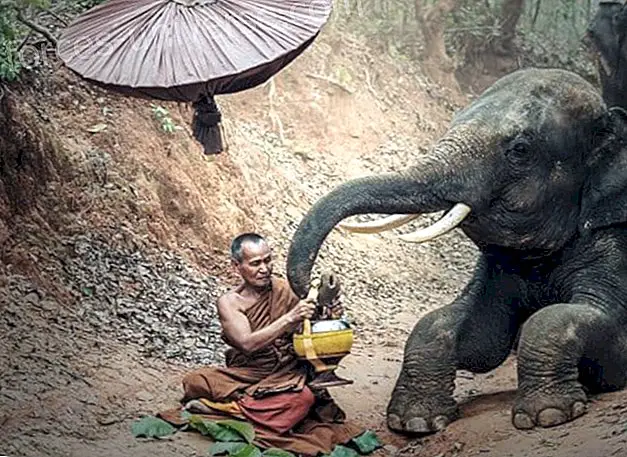
Press release • 12/10/10 • In the category Education and culture
The Anthroposophical Society in Spain began in 1982 with a small group of about 13 people who began studying the work of R. Steiner and working anthroposophy around 1975. Over time this group was increasing and, later, they take contact with the General Anthroposophical Society in Dornach, beginning the procedures for the constitution of the Anthroposophical Society in Spain.
Since 2009, there is a new space that has allowed us to carry out multiple activities, courses and conferences, bringing Anthroposophy closer to those people who are looking for a new form of knowledge.
The areas where more activities related to Anthroposophy are developed are Madrid and Catalonia, mainly due to the concentration of members in those areas, although there are also initiatives in Galicia, Valencia, Malaga, Extremadura, the Basque Country, and other areas of Spain.
Anthroposophy
Rudolf Steiner [1861-1925] has developed the scientific-spiritual basis (Anthroposophy) for the understanding of the world and of the human being himself. Human capacity for knowledge is not limited to the physical-material; the human being can know the laws and etheric forces that act in the formation and vegetative development, as well as the astral and constellation influences on life on Earth.
In his book "The Philosophy of Freedom" (1894), Steiner provides us with a firm ground to advance knowledge in a safe way with our thinking and our experience; The fundamental relationship of the human mind with the world is not dualistic, but participatory.
“… We no longer just want to believe, we want to know. Each one of us demands the right to start from his immediate experiences and personal experiences and then rise from there to the knowledge of the whole universe ”.
Based on this knowledge, Rudolf Steiner expanded and gave a new orientation to address knowledge in different sciences, such as medicine, agriculture, pedagogy, social sciences, mathematics and astronomy, the arts, architecture, etc., and creating new ones such as, for example, Euritmia and the Art of the Word.
Biodynamic Agriculture
At the beginning of the 20th century there were already farmers who noticed the degeneration of the fertility of the land and the nutritional quality of food. When they asked Rudolf Steiner what they could do to remedy it, he organized a working conference in Koberwitz, east of Breslau, opening the way for a knowledge of the living, the mood and the spiritual in nature, and with it the possibility of leading the work with the earth and its creatures towards a 'new order' where the natural is elevated and integrated into the human.
This 1924 work has been documented in the book "Course on Biological-Dynamic Agriculture" [Rudolf Steiner Editorial], "... in the course I tried first of all to develop what are the conditions for the different aspects of agriculture to thrive, .... how plants develop in all their diversity as well as animals ... how to promote a reform of fertilization and the fight against weeds and pests ... it is an eminently cosmic-terrestrial matter. ”
Steiner said that the land is an organ of the agricultural body and should be maintained in a vital and fertile state using natural means: rotations of well-thought crops, compost made with manure from the farm as fertilizer, as well as mechanical control of weeds, control of diseases using materials based on plants and minerals, …
Anthroposophical Medicine
“Anthroposophical medicine, which is part of the so-called complementary medicine, is based on academic medicine and is only practiced by qualified doctors. In addition, it broadens the knowledge of academic medicine with the research resulting from other fields such as life, the soul and the spirit of the human being. The methods he uses for this research are those of Rudolf Steiner's anthroposophical spiritual science. In its development its contributions in the therapeutic medical field can be highlighted in three directions basically.
Anthroposophical medicine is based on the conception of man and the world of spiritual Science or Anthroposophy. This conception presents the human entity constituted by different planes or dimensions: bodily, vital, emotional and spiritual.
The scientific knowledge of the dynamics, processes and laws of each of these dimensions, as well as the relationship between them, provides an anthropological extension that leads to the field of medicine gives meaning and explanation to both the state of health and that of the illness.
In this way anthroposophical medicine complements academic medicine in its purely material and mechanical conception of health and disease, disease is a defect or damage and therapy consists in its repair and is therefore a technical problem. Extends the biological and psychosomatic medicine that base their therapies on the regulation of altered functions or on guidelines and advice with which the patient can solve their problems.
Thanks to the knowledge of anthroposophical medicine, the relationship between physical-biological and spiritual-spiritual components is specifically known, resulting in an extension where the body and the psyche are as partners of the self or individuality of the patient. His conception of the disease is procedural and includes, together with the material, functional and psychosocial phenomena, the individuality of the patient. The disease is therefore an event that has to be seen in relation to the biography of the patient, with their vital circumstances and with their possibilities and conditions of evolution and development.
The therapy will always be individual both in the treatment and in the accompaniment of acute or chronic situations.
In short, anthroposophical medicine provides a scientific vision of the healing forces of the human organism in its state of equilibrium or health and in its state of disease. The meaning of this contribution is broad, comprehensive and dynamic.
Waldorf Pedagogy
Rudolf Steiner, founder of the Waldorf Pedagogy in 1919, in Stuttgart (Germany) laid the foundation for a methodology that emanates from the freedom, initiative and creativity of the educator.
It is based on everyday research and on the understanding of the evolving child: of physical development, of psychic faculties and of individuality. Educating children requires from the adult a deep personal work that enables them to perceive the maturation processes of the students and to capture the phenomena of nature and the scientific, historical and social impulses of our times.
For many people it is a crucial experience to have been able to learn about Waldorf Pedagogy. They appreciate the atmosphere of a Waldorf educational center, find answers to personal and pedagogical questions and get to know an integral and coherent way in working with children. Delving into Waldorf Pedagogy also means embarking on an individual development path that leads to a broader knowledge of ourselves.
“What we do for the child,
not only do we do it for now,
but for a lifetime
CONTACT INFORMATION:
www.sociedadantroposofica.com
Photography: Goetheanum Dornach, courtesy of the Anthroposophical Society of Spain.






